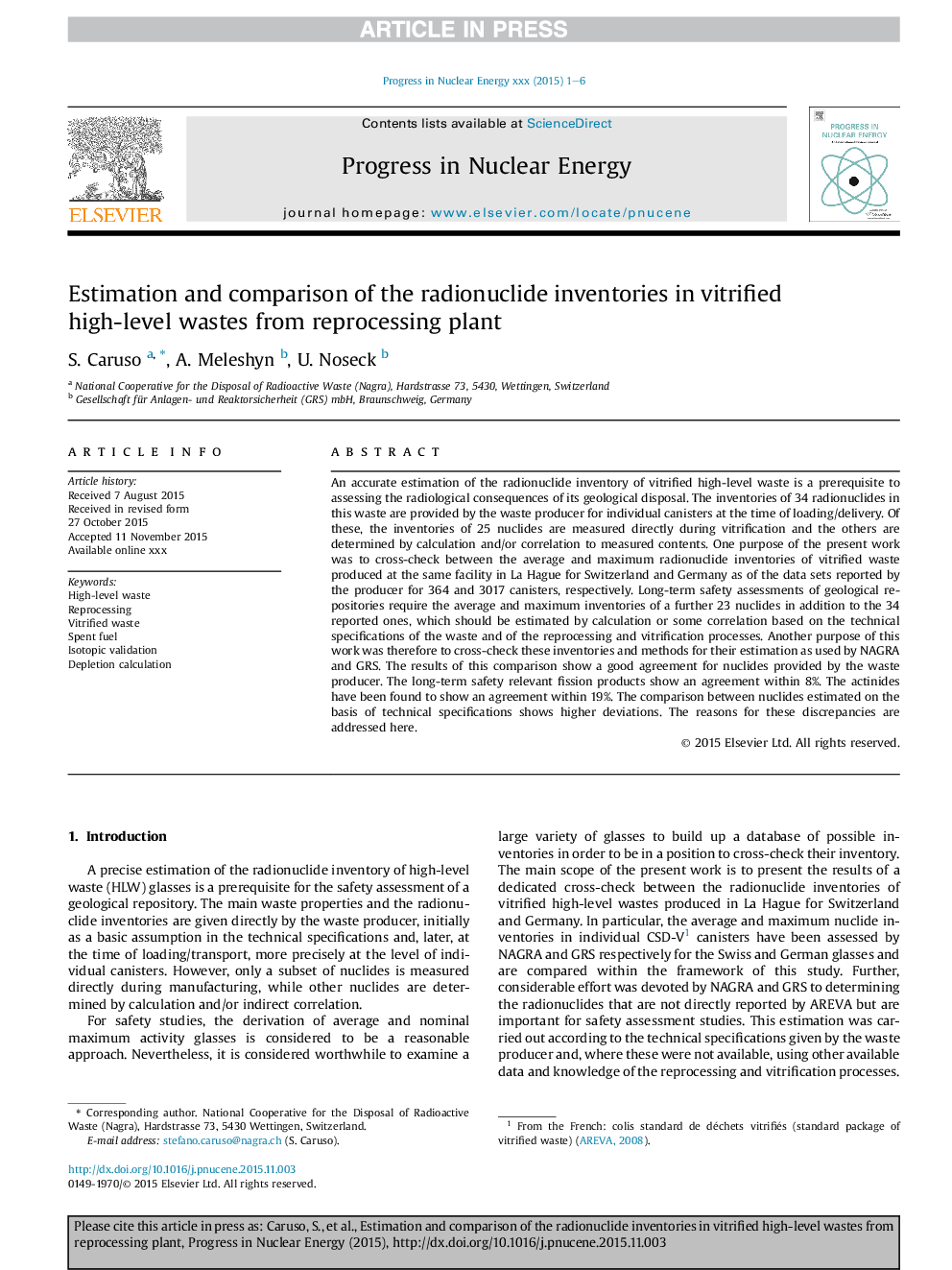| Article ID | Journal | Published Year | Pages | File Type |
|---|---|---|---|---|
| 5478238 | Progress in Nuclear Energy | 2017 | 6 Pages |
Abstract
An accurate estimation of the radionuclide inventory of vitrified high-level waste is a prerequisite to assessing the radiological consequences of its geological disposal. The inventories of 34 radionuclides in this waste are provided by the waste producer for individual canisters at the time of loading/delivery. Of these, the inventories of 25 nuclides are measured directly during vitrification and the others are determined by calculation and/or correlation to measured contents. One purpose of the present work was to cross-check between the average and maximum radionuclide inventories of vitrified waste produced at the same facility in La Hague for Switzerland and Germany as of the data sets reported by the producer for 364 and 3017 canisters, respectively. Long-term safety assessments of geological repositories require the average and maximum inventories of a further 23 nuclides in addition to the 34 reported ones, which should be estimated by calculation or some correlation based on the technical specifications of the waste and of the reprocessing and vitrification processes. Another purpose of this work was therefore to cross-check these inventories and methods for their estimation as used by NAGRA and GRS. The results of this comparison show a good agreement for nuclides provided by the waste producer. The long-term safety relevant fission products show an agreement within 8%. The actinides have been found to show an agreement within 19%. The comparison between nuclides estimated on the basis of technical specifications shows higher deviations. The reasons for these discrepancies are addressed here.
Related Topics
Physical Sciences and Engineering
Energy
Energy Engineering and Power Technology
Authors
S. Caruso, A. Meleshyn, U. Noseck,
